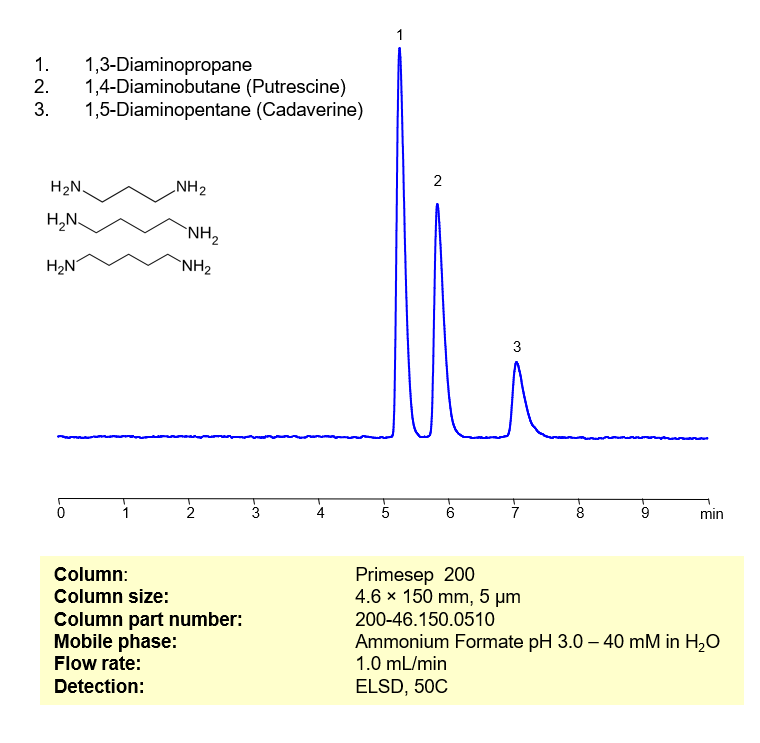HPLC Method for Analysis of 1,5-Diaminopentane (Cadaverine), 1,3-Diaminopropane, 1,4-Diaminobutane (Putrescine) on Primesep 200 by SIELC Technologies
Separation type: Liquid Chromatography Mixed-mode

1,3-Diaminopropane, or trimethylenediamine, is a key heterocycle building block and precursor of the chemotherapy antineoplastic agents Prioxantrone and Losoxantrone. 1,4-Diaminobutane, or Putrescine, is one of the main sources of the foul odor of rotting flesh, but has found use as a building block of Nylon 46. 1,5-Diaminopentane, or Cadaverine, is another source of the foul odor of rotting flesh and since its produced by the decarboxylation of lysine, can be used as a biomarker for lysine metabolic deficiencies.
These (putrid) diamines can be retained, analyzed, and separated on a Primesep 200 column using an isocratic analytical method with a simple mobile phase of water, Acetonitrile (MeCN), and an Ammonium formate (AmFm) ionic modifier. This analysis method can be detected with an Evaporative Light Scattering Detector (ELSD) or any other evaporative detection method (CAD, ESI-MS).
High Performance Liquid Chromatography (HPLC) Method for Analysis of 1,5-Diaminopentane (Cadaverine), 1,3-Diaminopropane, 1,4-Diaminobutane (Putrescine)
Condition
| Column | Primesep 200, 4.6 x 100 mm, 5 µm, 100 A, dual ended |
| Mobile Phase | H2O |
| Buffer | Ammonium formate pH 3.0 – 40 mM |
| Flow Rate | 1.0 ml/min |
| Detection | ELSD, 50C |
| Peak Retention Time | 5.2, 5.8, 7.2 min |
Description
| Class of Compounds | Diamino |
| Analyzing Compounds | 1,5-Diaminopentane (Cadaverine), 1,3-Diaminopropane, 1,4-Diaminobutane (Putrescine) |
Application Column
Primesep 200
Column Diameter: 4.6 mm
Column Length: 100 mm
Particle Size: 5 µm
Pore Size: 100 A
Column options: dual ended
1,4-Diaminobutane (Putrescine)
1,5-Diaminopentane (Cadaverine)





